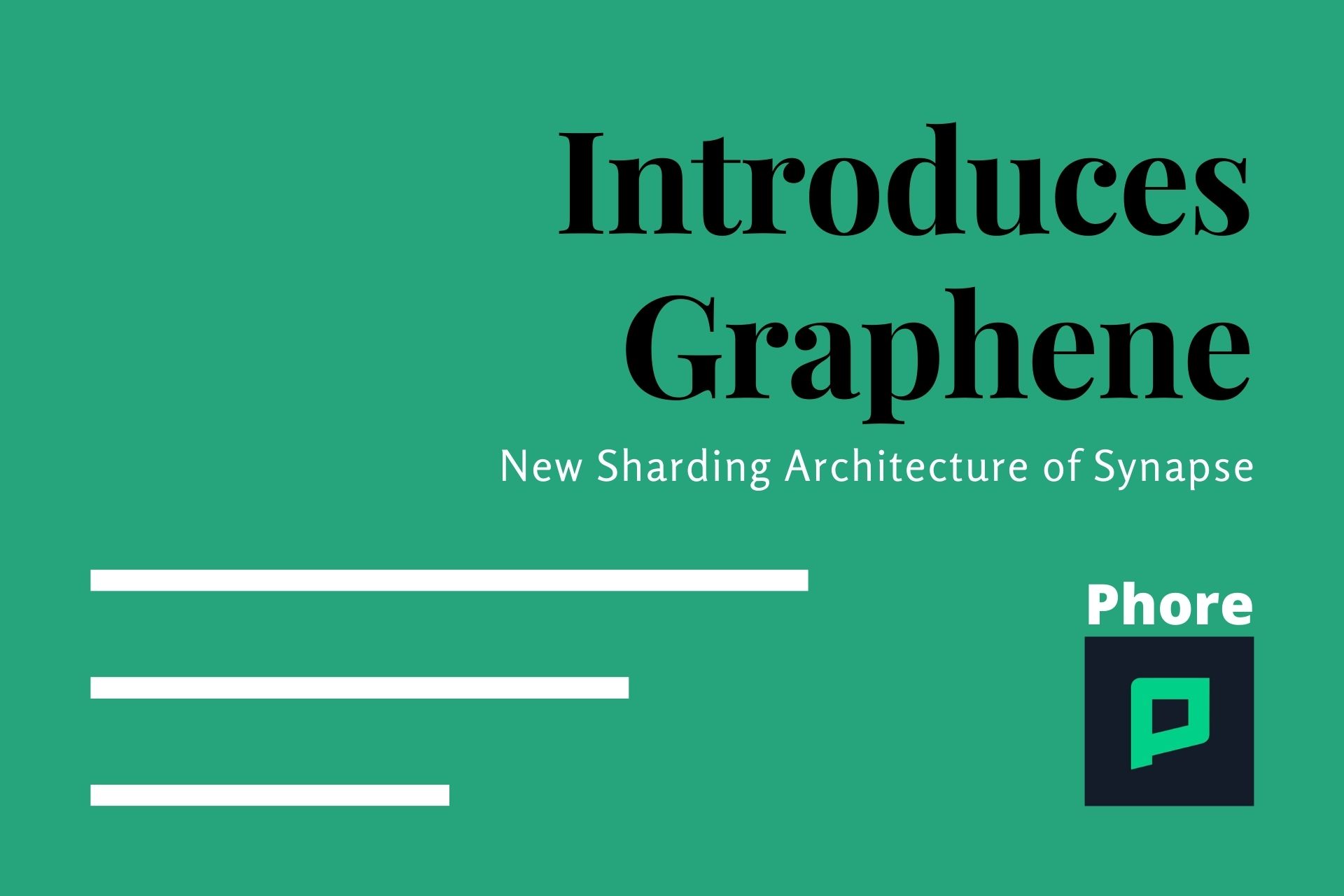Phore Blockchain Introduces Graphene to Its Sharding-based Synapse Update

Decentralized blockchain platform Phore has come a long way in its journey of offering secure, flexible, and scalable blockchain solutions to users. To expand the platform capabilities further, the Phore community has decided to implement the new sharding infrastructure under the Synapse update.
The implementation of the smart contract-based sharding infrastructure will offer nearly infinite scalability to the Phore blockchain. The Synapse will also serve as a new, independent cryptocurrency of the Phore blockchain that will help in introducing staking capabilities as well as unlock massive opportunities for Phore in the DeFi space.
Introducing Graphene to the New Sharding Architecture of Synapse
The reason behind introducing Graphene to the new Sharding infrastructure of Synapse is creating an extremely versatile and lightweight network which is also extremely secure and strong.
Over the next few weeks, Phore will bring the Graphene updates to Synapse. Implementing the Graphene architecture is a complex process and the team is working to develop a high-performance and secure network architecture without compromising on the functioning of core features and protocols.
Besides, the team is also actively working to overcome all the hurdles that can come in the way during the development process. Below are the two critical and complex problems that the team solved while implementing Graphene.
- To determine the block “proposer”, shard chains rely on a secure and reliable method. Previously, the Phore team relied on the finalizing block of the last beacon chain. However, user didn’t need to process the block before validating the shard block.
The team was looking for an ideal solution where unwanted blocks are no more accepted. Also, the solution needs to be time-independent so that even if the beacon chain remains ahead of the shard chain, the blocks can still be accepted.
To resolve this, the Phore developers’ team said that the best way would be adding two 32-byte hashes per epoch. These hashes will store a RANDAO hash – a decentralized, immutable random number generator – along with the merle root of all active validators.
In such a case, the shard chain would include the “latest finalized beacon block” while making it mandatory that this block is processed simultaneously as the shard chain processes a block. Else, the shard chain will wait for the beacon chain to first process the block. This solves any anomalies in the functioning. - On the other hand, the Phore developers were running a stability test while simulating a few validator nodes and side chains on a private server. While testing, the team encountered a bug pushing the CPU usage to 100% over time. The team has successfully fixed the issue by running 8 shards, 128 validator nodes on a single server just at 5% of the overall CPU power. Thus, the team ensured that the community faces no issue while running a validator node on a local machine.
As said, the goal with Graphene is to create a very flexible network that is strong and secure at the same time.
Knowing About the Phore Blockchain Synapse Update
To expand the resulting capabilities and scalability of its blockchain, Phore has decided to introduce a brand new smart contract infrastructure dubbed sharding that offers near-infinite level scalability.
Besides, the Phore blockchain also rewards its token holders via masternode and staking rewards with a whopping 20% ROI every year. The Phore Synapse will introduce a completely decentralized governance system.
The Synapse update will implement a new network model that uses “validator” nodes that will be taking on the staking function. Just like masternode, the Synapse update will allow the “validator” nodes to earn passive income while simultaneously reducing the entry barrier. The collateral for running a “validator” node will be just 1/100th of a Phore masternode.
Synapse will bring the ability to process millions of transactions per second on the Phore blockchain. It can run a dedicated “shard” blockchain for any application while virtually eliminating the gas fee. Synapse can also link multiple smart contract protocols which will be a major push to the growth of a Deft ecosystem. Besides, Synapse can also bridge cross-chain smart contracts like TRX, EOS, and ETH.
The Phore Synapse aims to be the future of DEFI developments by getting the Phore blockchain closer to the DEFI ecosystem.
Conclusion
The Phore blockchain has some path-breaking changes ahead in line that will transform the network’s functionality and operational capabilities to new heights.
